4.09.2019

Elon Musk and SpaceX are developing a steel Mars rocket system called Starship.
- SpaceX is developing a towering two-stage rocket system called Starship that's being designed to land people and cargo on Mars.
- The company is already scouting for locations with buried frozen water (and few landing hazards) for mid-2020s Mars missions.
- SpaceX apparently collaborated with a NASA scientist to request photos of possible landing sites. Writer Robert Zimmerman first posted about the images from the Mars Reconnaissance Orbiter.
- SpaceX previously requested such images in support of Red Dragon, another Mars landing program the company scrapped once it decided to pursue Starship (then called "Big Falcon Rocket").
- Elon Musk, the founder and CEO of SpaceX, plans to show off Starship's latest design update and mission plans on September 28 in Texas.
- Visit Business Insider's homepage for more stories.
SpaceX is scouting for prime real estate to populate Mars, according to a database of NASA spacecraft photography.
The entries suggest the rocket company, founded by tech mogul Elon Musk, is looking for relatively flat, warm, and hazard-free landing sites for its upcoming launch vehicle, called Starship.
SpaceX is developing the towering two-stage rocket ship to land 150 tons and up to 100 people at a time on Mars, with the first missions starting in the mid-2020s.
Each candidate landing site is a place where frozen water may be buried under just a bit of red dirt and thus accessible to robots and people. Such a resource might be mined, melted, and turned into precious supplies such as water, air, and rocket fuel.
Space-history writer Robert Zimmerman first posted about the images on his site, Beyond the Black. In perusing a fresh batch of data from NASA's Mars Reconnaissance Orbiter (MRO), Zimmerman noticed several photos with titles that included the words "Candidate Landing Site for SpaceX Starship."
"To put it mildly, it is most intriguing to discover that SpaceX is beginning to research a place where it can land Starship on Mars," Zimmerman wrote, adding that each site is a probable location to find buried ice.
SpaceX declined to immediately comment to Business Insider, but the images appear to be authentic requests from the company via a NASA scientist.
SpaceX is considering at least nine landing sites for Starships
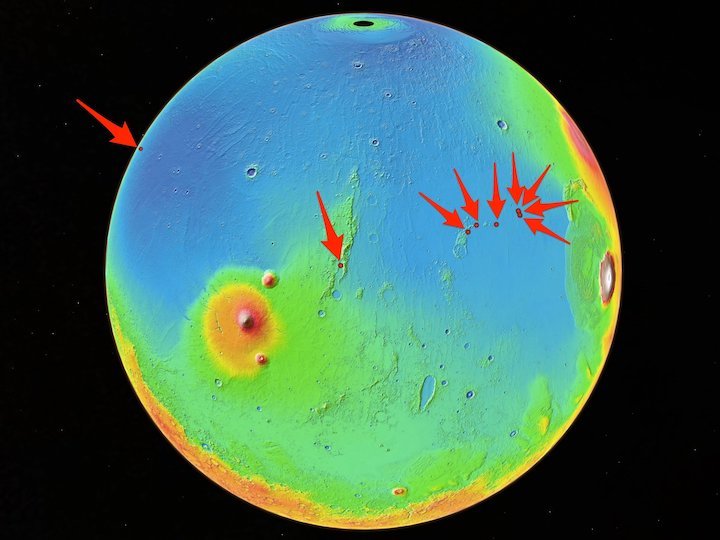
An elevation map of Mars showing the nine candidate landing sites SpaceX is considering for its first Martian voyages of Starship.NASA/USGS/ESA/DLR/FU Berlin (G. Neukum) via Google Earth Pro; Business Insider
The new pictures came from HiRISE, a telescope operated by the University of Arizona that's mounted on the MRO spacecraft. The telescope's camera can photograph surface features at a resolution as fine as one foot per pixel — three times greater resolution than Google Maps provides of Earth, and on par with spy satellites.
However, since HiRISE can only take so many sizable images per orbit and beam them tens of millions of miles back to Earth, scientists must file image requests for locations of interest to them months in advance.
Although Zimmerman highlighted four different Starship landing sites in the HiRISE catalog, Business Insider located image requests for nine different SpaceX-related locations Mars. The locations are plotted above using Google Earth.
All of the Starship image requests were filed by Nathan R. Williams, a planetary geologist at NASA's Jet Propulsion Laboratory (JPL).
Williams has previously requested dozens of images in support of NASA's upcoming Mars 2020 rover mission, which will attempt a landing in Jezero crater. He has also asked for dozens of photos to support SpaceX's now-defunct Red Dragon mission to Mars.
"[H]e was bound by a non-disclosure agreement with SpaceX and could not comment," Zimmerman said after contacting Williams about the Starship image requests. (Neither Williams nor NASA JPL immediately responded to Business Insider's request for comment.)
The HiRISE site shows that, on April 29, Williams requested 18 different images of Mars related to Starship. Specifically, he asked for two images each per site — each from a slightly different angle — to build stereo anaglyphs pairs. Such pairs can reveal finer 3D details about a location, including its terrain and landing hazards.
Of the nine locations Williams asked HiRISE to observe, six have published images, two are not yet published, and one has yet to be imaged.
The landing sites are all flat, temperate, and watery
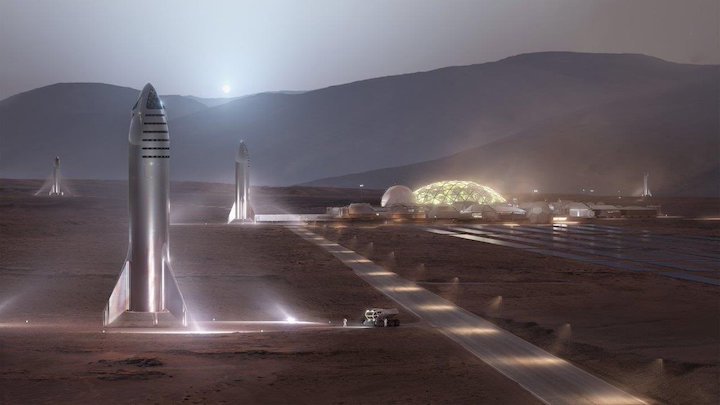
An illustration of SpaceX's Starship vehicle on the surface of Mars, with greenhouses and a nascent space colony in the distance.Elon Musk/SpaceX via Twitter
Musk has said in recent years that he wants SpaceX to help build a self-sustaining city on Mars by the mid-2050s — partly as a way of "backing up" humanity like a hard drive. To do that without going bankrupt, he'll need a lot of Starships and an ability to refuel them on the red planet.
The company hopes to make Starship fully reusable — the first such rocket of its kind — to lower launch costs by 100- to 1,000-fold, or more. Refueling on Mars is key to making Musk's scheme work, which is why SpaceX chose methane as its fuel of choice.
By using solar (or perhaps nuclear) energy, Musk says a process called the Sabatier reaction could turn water and carbon dioxide in the thin Martian atmosphere into methane. That fuel, along with oxygen extracted from the water, could be used to refuel Starships for return flights to Earth, as well as provide breathable air and drinking water.
Eight of the nine possible landing sites are located on the border of two major regions called Arcadia Planitia (to the north) and Amazonis Planitia (to the south):
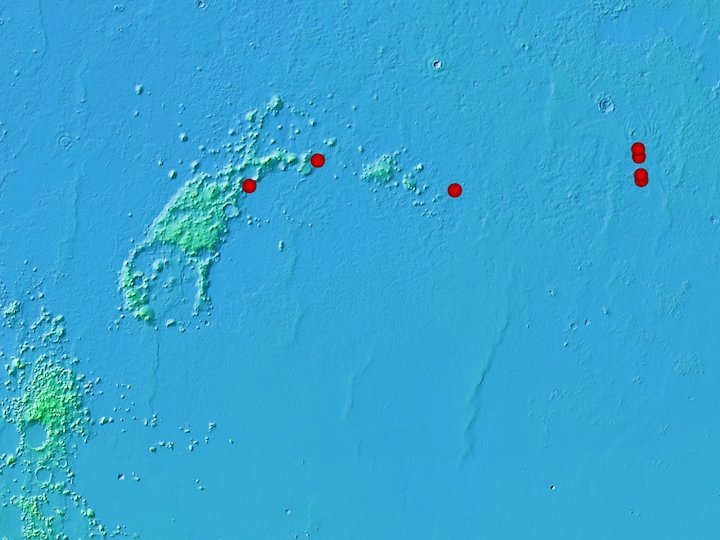
Flat, icy, and low-laying places seem to be where SpaceX want to land Starships.NASA/USGS/ESA/DLR/FU Berlin (G. Neukum) via Google Earth Pro; Business Insider
These regions are likely rich with sources of ice near-surface ice — possibly enough to comprise massive, rapidly buried glaciers that remain preserved after millions of years.
Some evidence for this is in the shape of craters, which appear to sink long after a meteorite impact because they expose ice to Martian air, which is about 1% as thick as Earth's.
Functionally that is a vacuum, causing the now-exposed ice to sublimate away into the air in the same way a block of dry ice does when it warms up.
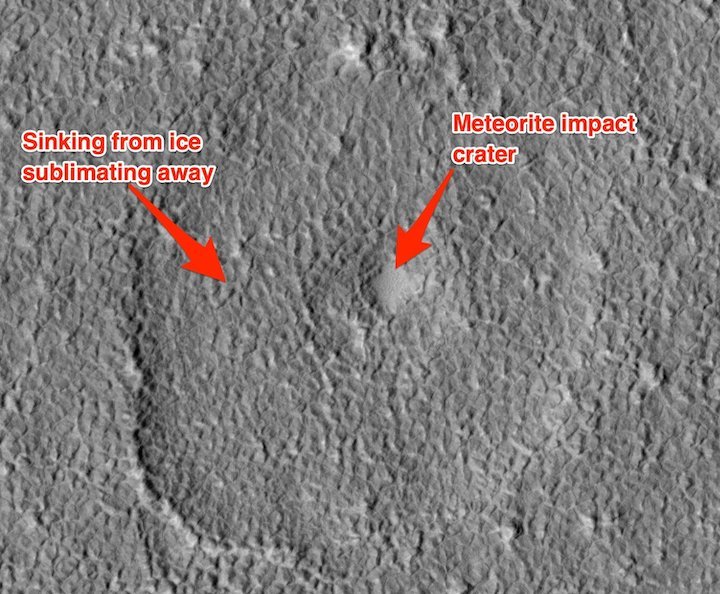
One line of evidence for ice on Mars are impact sites. Ice exposed to the thin Martian air sublimates into a gas and collapses soil around the original crater.NASA/JPL/University of Arizona; Business Insider
They're also flat and relatively free of boulders, which are objects that you definitely do not want to set your spacecraft down on or bang into during landing.
The sites are also distant from Mars' super-frigid polar caps, are a bit warmer, see quite a bit of sun (important for gathering solar energy), and are relatively low-laying. Because air sinks and gets denser at lower elevations, this might help Sabatier machines more efficiently suck carbon dioxide for creating methane fuel.
SpaceX is just beginning to test Starship
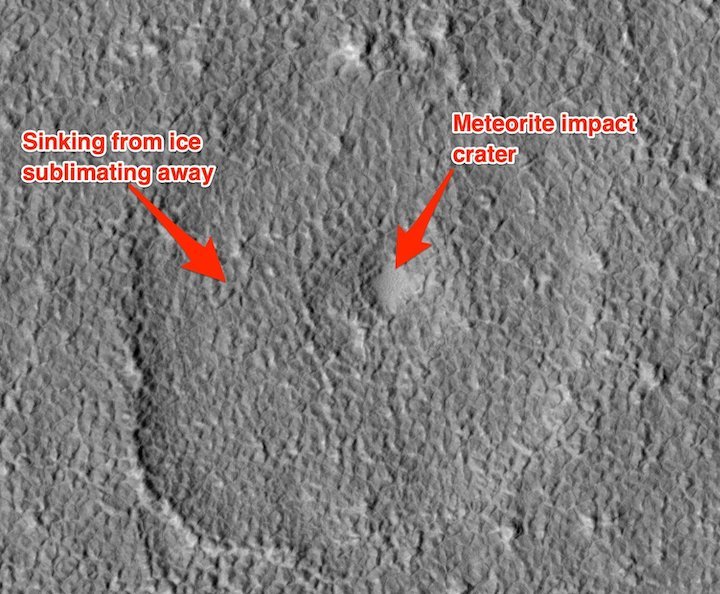
Starhopper — SpaceX's first Mars Starship prototype — hovers over its launchpad during a test flight in Boca Chica, Texas, on August 27, 2019.Trevor Mahlmann/Reuters
At this stage, SpaceX does not yet have a Starship completed.
But the company has built and thoroughly tested new methane-burning Raptor engines. SpaceX also strapped one such engine to an early prototype, called Starhopper, and soared it more than 490 feet (150 meters) into the air above South Texas.
Workers are now building two bigger, orbit-capable prototypes: Starship Mark 1 in Boca Chica, Texas, and Starship Mark 2 in Cocoa, Florida. Musk tweeted on Friday that that the company will attempt to launch them about 12.4 miles (20 kilometers) into the air in October, then around Earth "shortly thereafter."
If all goes according to the CEO's "aspirational" timeline, the rocket company could be launching passengers around the moon and missions to Mars in the mid-2020s.
Musk also plans to update the world on SpaceX's latest design for Starship and plans for the launch system on September 28. It's possible he may also say more about where, exactly, the company plans to land its first interplanetary Starships.
Quelle: Business Insider
